New Issues (YouTrack Lite)
The page that you use to report an issue is stripped down to include only what you need to create an issue in YouTrack. To access this page, click the New Issue button in the application header. Alternatively, you can click the New issue icon in the header for the list of issue drafts in the left sidebar.

If you're currently viewing the list of issues, the page for reporting a new issue opens in a pop-up window. This lets you create new tasks without switching your work context from the list.
If you're viewing a single issue, the page for reporting a new issue opens in the main content window of the application.
Here's an overview of the functionality that is supported in this issue view.
Issue Summary
Every issue must include a summary.

The summary lets you and your team know what the issue is about in a nutshell.
Tags
To the right of the input for the issue summary, you'll find an option to add tags to the current issue draft.
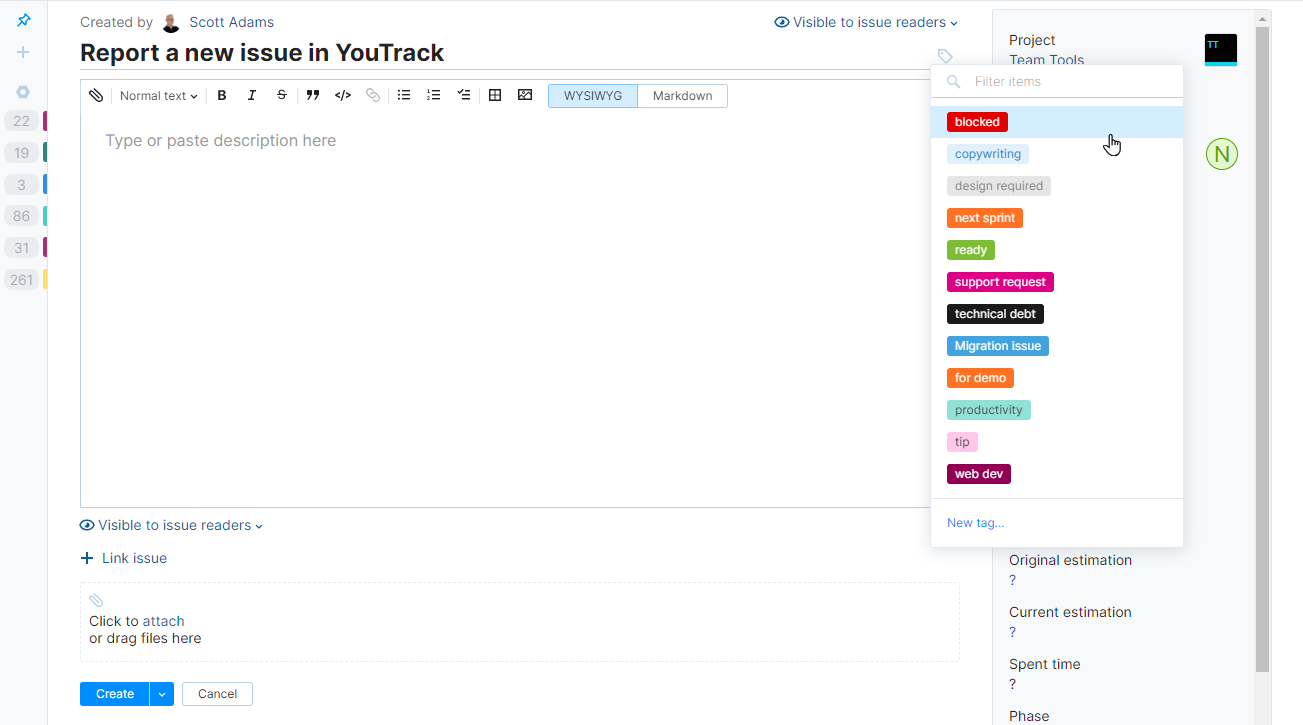
To add a tag, click the Add tag button and select a tag from the list.
To remove a tag, click the Remove tag icon inside the tag.
Issue Description
Below the summary is an input field for the issue description. If the issue summary is descriptive enough, you can skip it — the description is not mandatory. However, when the issue is more complex, it often helps to solve an issue faster when you describe it in more detail.
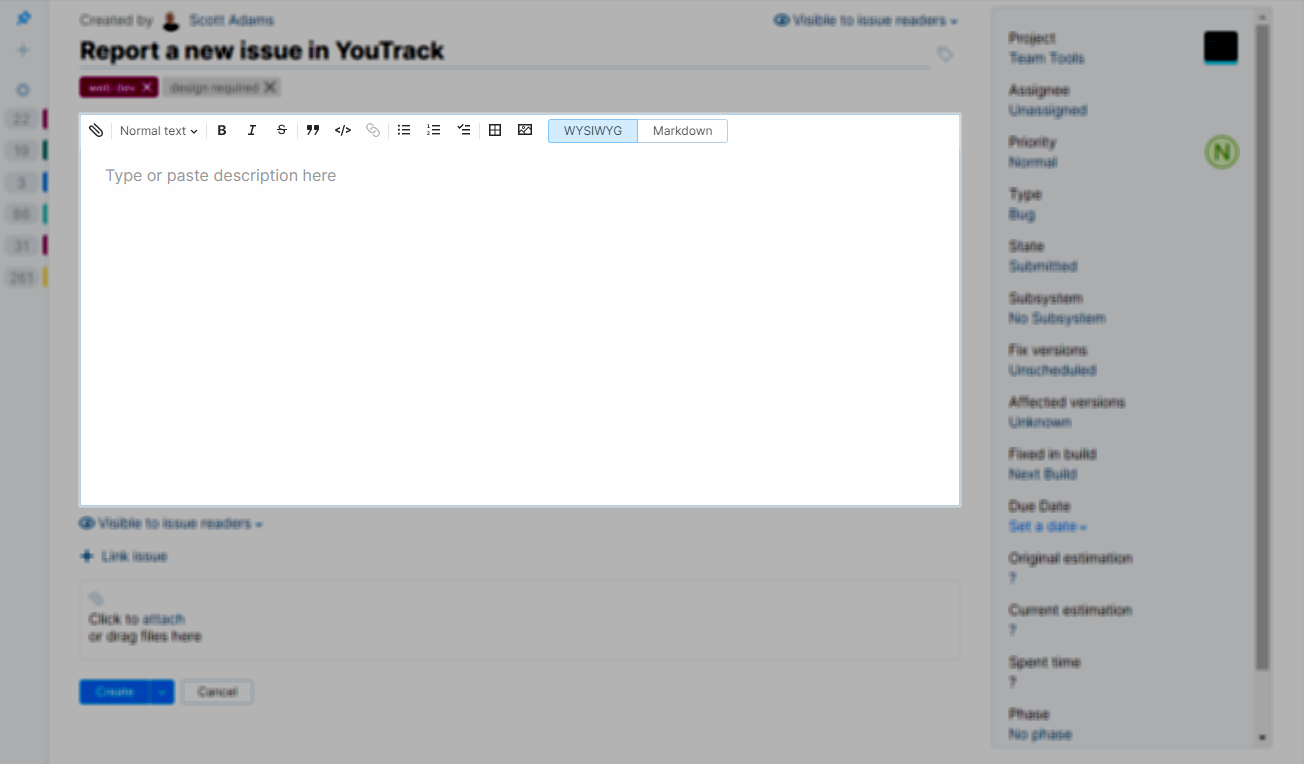
The options in the toolbar let you choose to format the issue description as rich text with the WYSYWIG editor or using Markdown syntax.
Supplemental Text Fields
The new issue view supports a special type of custom field for storing text. These fields store a string of characters that you can format in WYSIWYG or Markdown mode.
Fields with this type are not shown in the sidebar with other custom fields. Instead, they appear just below the issue description.
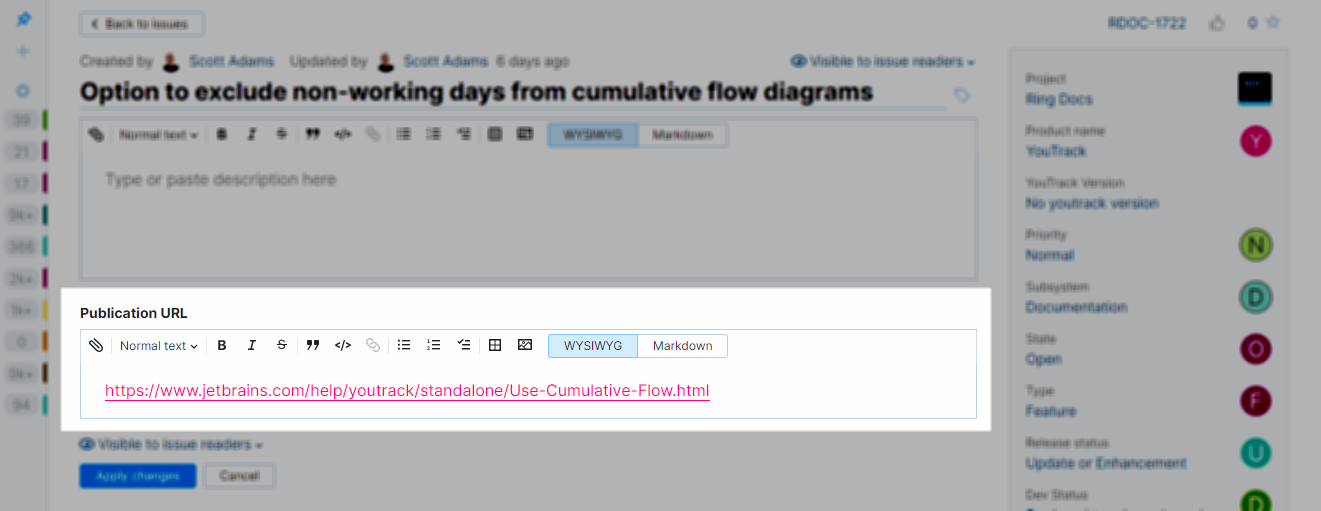
Issue Visibility
Below the issue description (and text fields, when present) you'll find an option that lets you set the visibility for the new issue.
The issue is usually marked as Visible to issue readers. This means that any member of this group who has the Read Issue permission in the selected project can view this issue.
If the owner of the project has defined a specific group to be used as the default visibility setting for new issues in the current project, this group will be selected automatically. To learn more about default visibility options, see Configure a Project.
To restrict the visibility of a new issue to specific users and groups, select these users and groups from the list.
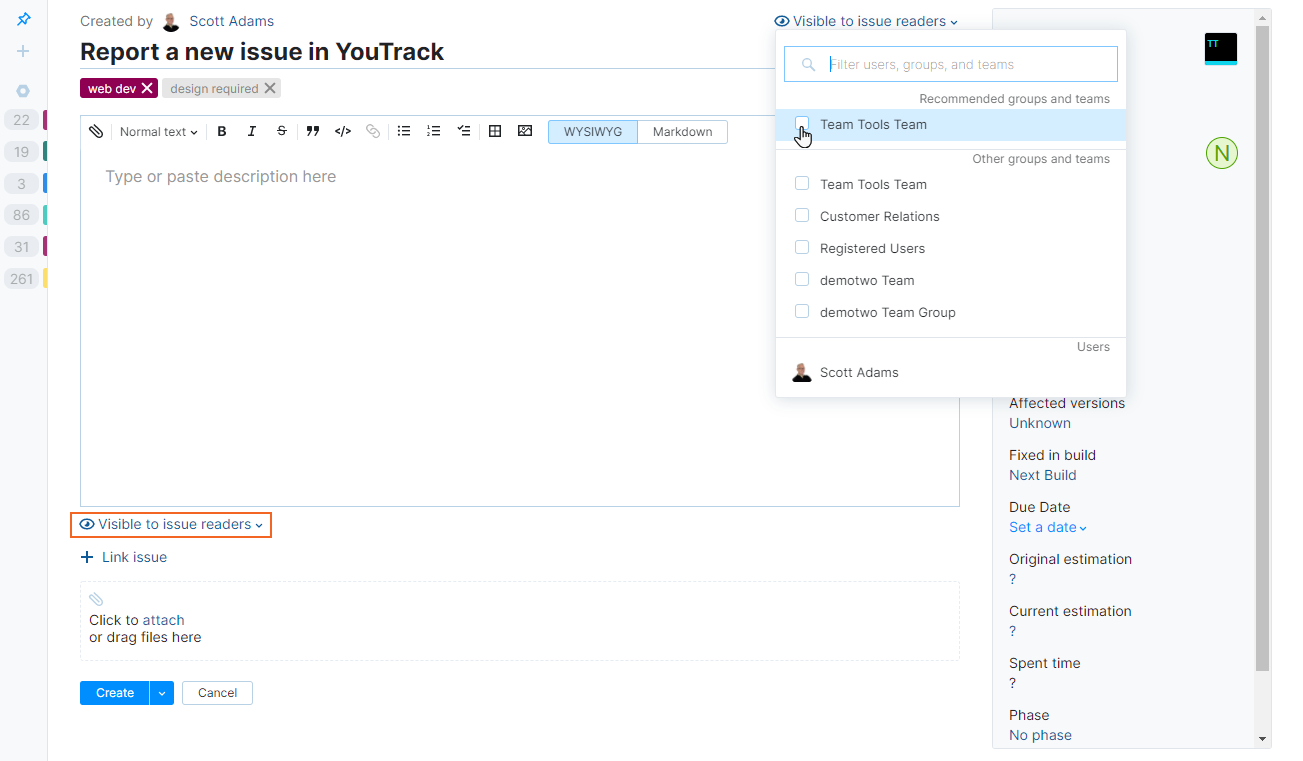
The current visibility settings are also shown at the top of the page. These two controls perform the same action and are always in sync.
Attachments
The page for reporting new issues has a drop zone for adding files as attachments.

Click the drop zone to select and attache files from your local directory.
Drag files to the drop zone.
Once you have attached one or more files, the attachments are shown as thumbnails in a dedicated section of the page.
Similar Issues
The New Issue page contains a section that shows issues that might be similar to the issue you are currently reporting. Maybe another user encountered the same problem and has already created an issue to fix it. In this case, you might add your comment to an existing issue and avoid creating a duplicate.
As you enter the issue summary, YouTrack searches for other issues with similar text.
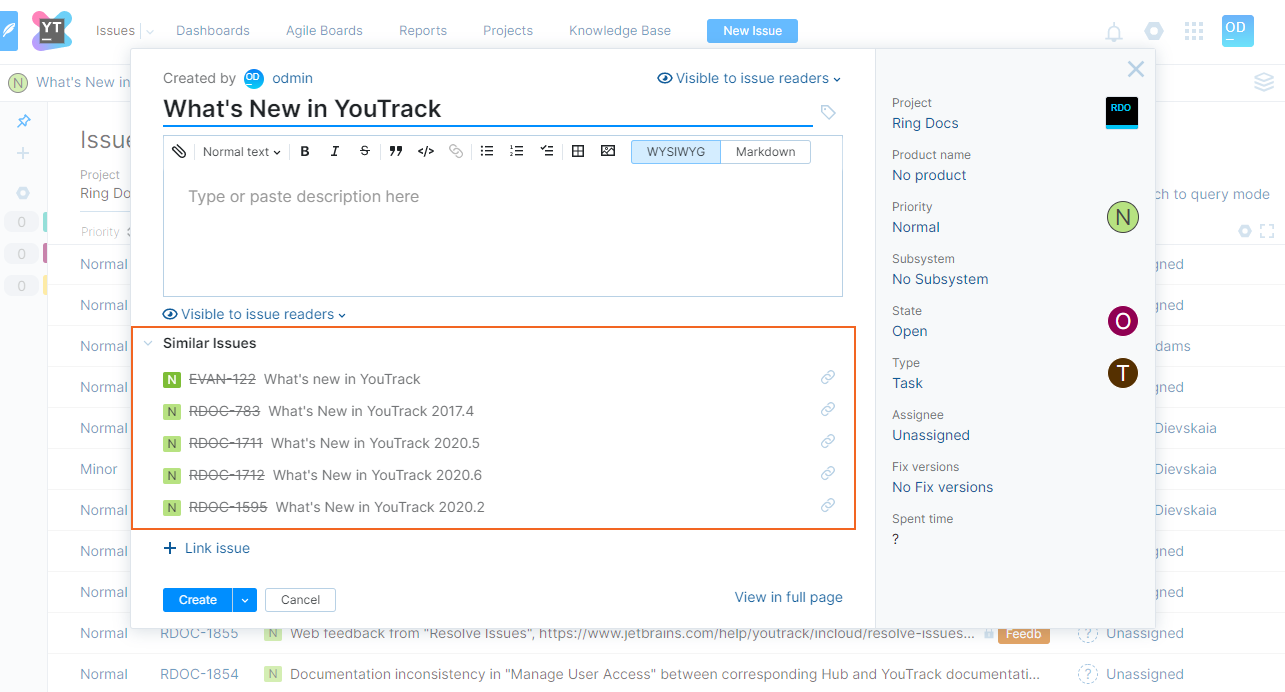
The list of similar issues is restricted show a maximum of five issues in a scrollable list. This ensures that the list doesn't hide other information on the form.
You can add links to similar issues without leaving the page.
For more information, see Find Similar Issues.
Custom Fields
The side panel contains a list of custom fields that are attached to the current project. Many fields are configured to use a default value. Fields can also be configured to require input for new issues.
The first issue field that is shown in this panel selects the project that the issue belongs to.
Every issue belongs to a single project project — you never have the option to select an empty value.
The set of custom fields can vary from project to project. If you move the issue to another project, the set of available fields may change as well.
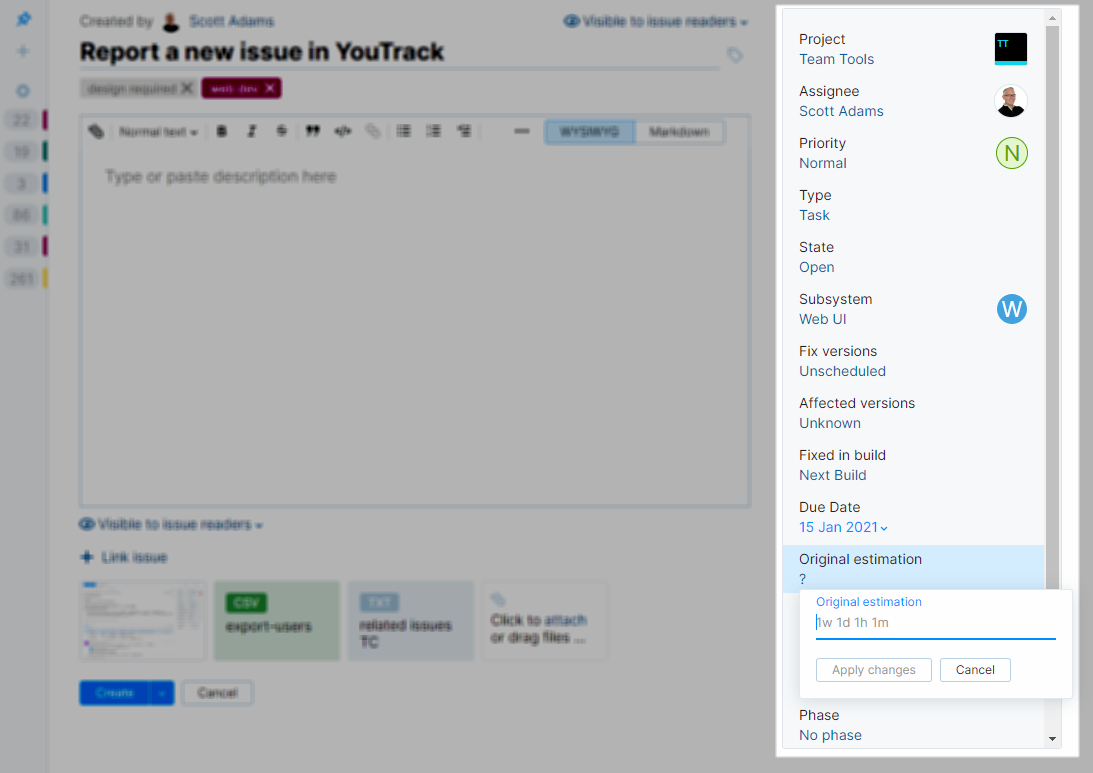
To set or change the values for custom fields, click the field and choose one or more values from the list or enter a value.
Actions for New Issues
There are two action buttons at the bottom of the page for reporting new issues. These actions let you decide what you want to happen next.
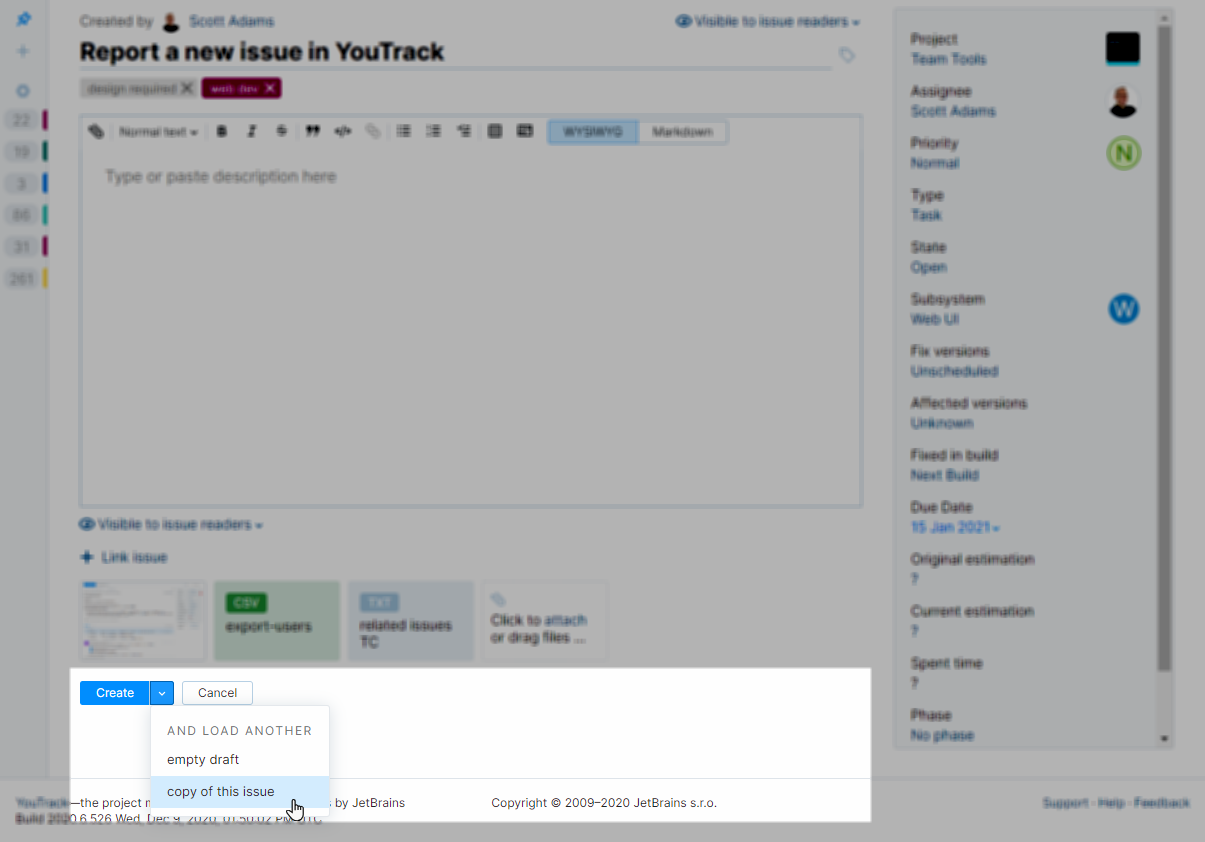
| Action | Description |
|---|---|
| Create | Reports the current issue in the selected project. This button has two options that let you choose what happens after you report the current issue. These options let you:
|
| Cancel | Closes the current issue without reporting it to the project. The issue is saved to your list of drafts. The same action is performed when you close the browser tab or window without clicking the Create button. |